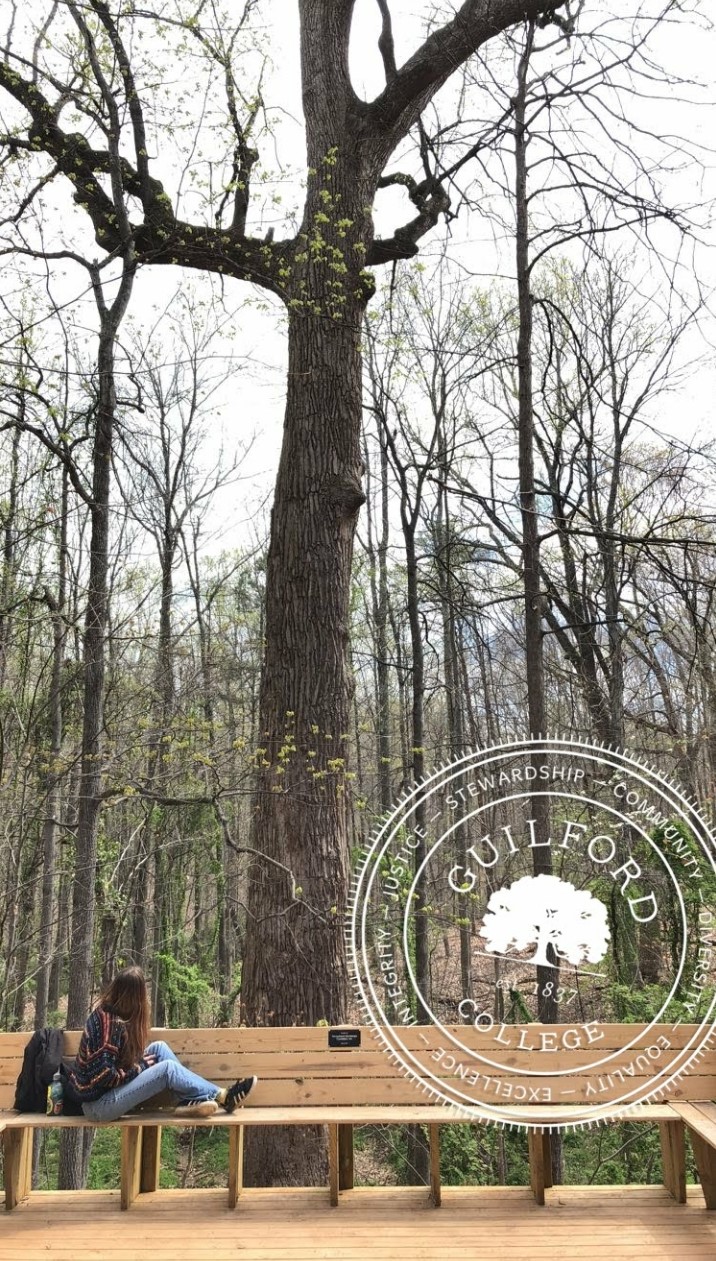2/19/21
The Guilford Woods has not always been how it is today. This area was once the land of the Saura and Keyawee peoples until it was stolen by European American Friends (Quakers) in the 1700s. This land has a thick and complex history. Today this 240-acre oasis of biodiversity is often used by students and surrounding community members as a place to take a walk or escape from our fast paced world of deadlines and technology. The woods have been used by students since 1837 when the school was founded. At that point it was known as the New Garden Woods. “In 1875, Founders was just a building in the woods with a fence around it just to keep the animals out. They had to raise their own food, farm, raise animals, and chop their own firewood.” said Stan Gillman, a former Guilford librarian, during an interview for the Guilfordian in 1995. Stan discovered that Founders was a boarding school for Quaker children for 50 years. The women stayed in Founders while the men stayed in Duke. Surrounding these two buildings was practically wilderness leaving them totally isolated for many years until John Woody was instructed by the superintendent of the school to make a path to the old train depot, where Market crosses Guilford College road today. The woods have undergone an immense amount of change since the founding of this school by the Religious Society of Friends.
If you visit the woods today, you will be guided through a maze of paths. You may follow the wide path that leads you around the full circumference of woods along it’s borders. You may choose at any time to divert inwards to the heart of the woods following small narrow paths that take you around trees and over hills. You may come across evidence of previous human activity such as stone fire pits, old carvings in large old trees, a painted stone wall, some bridges, some old benches or some art. These are forms of material evidence of history but these woods have many years of history embedded in their existence. Guilford was designated as a Historic District by the National Park Service with the woods having it’s own section of historical importance. Among the most important aspects is the abolitionist actions taken by the community’s Quaker pacifists, including Levi Coffin (1798- 1877), legendary Father of the Underground Railroad. If you follow Nathan Hunt Road into the woods, turn left into the woods following the high path to the right for 0.3 miles you will eventually come to the signature “Underground Railroad Tree.” This tree is a Tulip poplar dating back to before the 1800 was a silent witness to the lives and actions of African Americans (enslaved and freed), their white allies including some Quakers from New Garden Friends Meeting as well their enemies who didn’t believe slavery should end. Despite current reputation, not all Quakers during that time were willing to sacrifice their status to aid emancipated slaves. Quakers have made this land their own whether it was right of them to do so or not. Many trees have died and have been born since it’s occupation by the Saura and Keyawee people but the large tulip poplar has stood strong through it all.
